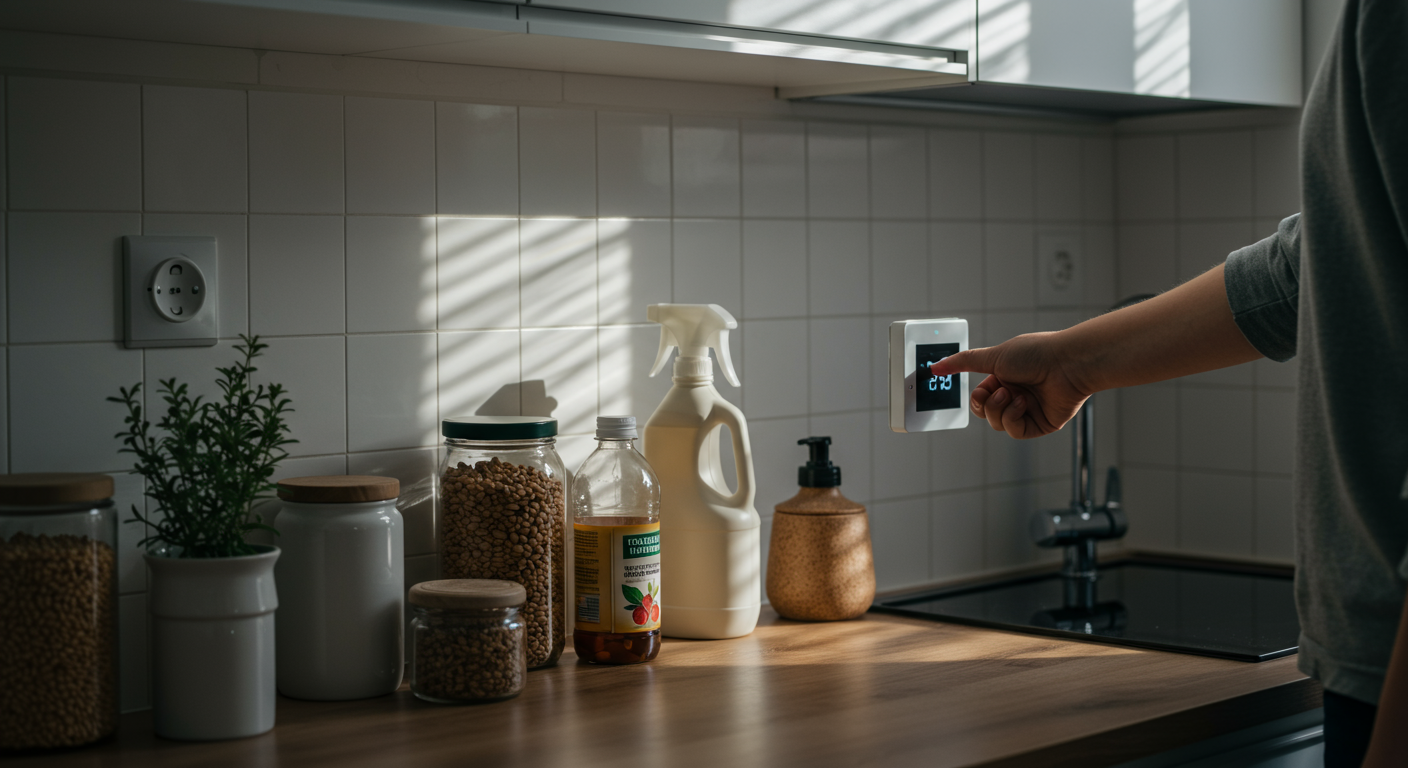Creating a smart sustainable home is no longer a futuristic concept; it's a practical and attainable goal for eco-conscious consumers like you. Embracing green technology allows you to reduce your environmental impact, conserve resources, and even save money on your utility bills. This guide dives deep into the world of smart home tech, providing actionable advice to transform your living space into an energy-efficient and sustainable haven.

Why Your Home Matters for Sustainability
Your home is a central hub for energy consumption, water usage, and waste generation. By making conscious choices about the technology and appliances you use, you can significantly reduce your carbon footprint and contribute to a healthier planet. A sustainable home minimizes environmental impact while optimizing comfort and convenience.
Essential Energy-Saving Hacks
- Smart Thermostats: These intelligent devices learn your heating and cooling preferences and adjust the temperature automatically, optimizing energy use based on your schedule and occupancy. Leading smart thermostats can save homeowners an average of 10-20% on their energy bills.
- LED Lighting: Switching to LED light bulbs is a simple yet impactful change. LED bulbs use up to 75% less energy and last much longer than traditional incandescent bulbs, significantly reducing your electricity consumption and the frequency of replacements. LED Light Bulbs can be a great start.
- Energy-Efficient Appliances: When purchasing new appliances, prioritize models with the Energy Star label. These appliances meet strict energy efficiency guidelines set by the U.S. Environmental Protection Agency, helping you save energy and reduce your utility costs.
- Smart Plugs: These handy devices allow you to control electronic devices remotely and monitor their energy usage. You can easily turn off appliances that are in standby mode, which can consume a surprising amount of electricity, contributing to phantom loads.
Water Conservation Strategies for Every Room
- Low-Flow Fixtures: Install low-flow showerheads, faucets, and toilets to reduce water consumption without sacrificing performance. These fixtures use less water while maintaining adequate water pressure.
- Smart Sprinkler Systems: Automated sprinkler systems use sensors and weather data to determine when your lawn needs watering, preventing overwatering and conserving water.
- Water Leak Detection: Smart water leak detectors can identify leaks in your pipes early, preventing water waste and potential damage to your home. These devices send alerts to your smartphone when a leak is detected.
Sustainable Decor & Furnishing Tips
- Eco-Friendly Materials: Choose furniture and decor made from sustainable materials, such as reclaimed wood, bamboo, and organic cotton. These materials have a lower environmental impact than conventional options.
- Non-Toxic Paints and Finishes: Opt for paints and finishes with low or zero VOCs (volatile organic compounds) to improve indoor air quality and reduce exposure to harmful chemicals.
- Reduce, Reuse, Recycle: Embrace the principles of reduce, reuse, and recycle in your home decor choices. Buy secondhand furniture, repurpose items, and recycle materials whenever possible.
DIY Home Green Upgrades
- Install Solar Panels: If possible, consider installing solar panels to generate your own renewable energy. Solar panels can significantly reduce or eliminate your reliance on the grid, lowering your carbon footprint and your electricity bills.
- Insulation Upgrades: Proper insulation helps to keep your home warm in the winter and cool in the summer, reducing the need for heating and cooling. Insulate your attic, walls, and floors to maximize energy efficiency.
- DIY Smart Home Projects: Explore DIY smart home projects to automate your home. For example, you can create a smart garden system using sensors, a Raspberry Pi, and open-source software to monitor soil moisture and control irrigation.
Smart Home Tech for Sustainability
- Smart Lighting Systems: Smart lighting systems allow you to control your lights remotely, set schedules, and adjust brightness levels. Many systems offer energy-saving features, such as automatically turning off lights when a room is unoccupied.
- Smart Blinds and Shades: Automated window coverings can adjust to the sun's position, regulating the amount of sunlight and heat entering your home. This helps to reduce your cooling costs in the summer and heating costs in the winter.
- Smart Home Energy Monitors: These devices provide real-time data on your energy consumption, helping you identify areas where you can save energy. By tracking your energy usage, you can make informed decisions about how to reduce your consumption.
Reducing Your Home's Carbon Footprint
- Conduct an Energy Audit: A home energy audit can identify areas where your home is losing energy, such as through air leaks or poor insulation. This can provide you with actionable recommendations to improve your home's energy efficiency.
- Offset Your Carbon Emissions: Consider offsetting your carbon emissions by supporting carbon offset projects, such as reforestation or renewable energy initiatives.
- Embrace Renewable Energy: Transition to renewable energy sources, such as solar or wind power. If you cannot install solar panels, explore options for purchasing renewable energy from your utility company.
Building a Truly Green Home
- Sustainable Design Principles: Incorporate sustainable design principles into your home's construction or renovation. This includes using eco-friendly materials, optimizing natural light and ventilation, and designing for energy efficiency.
- Water Harvesting and Greywater Systems: Install a rainwater harvesting system to collect rainwater for irrigation or other non-potable uses. Consider a greywater system to reuse water from showers and sinks for flushing toilets or watering your garden.
- Create a Green Roof: A green roof can provide insulation, reduce stormwater runoff, and create a habitat for wildlife. Consider a green roof on your home to enhance its sustainability.